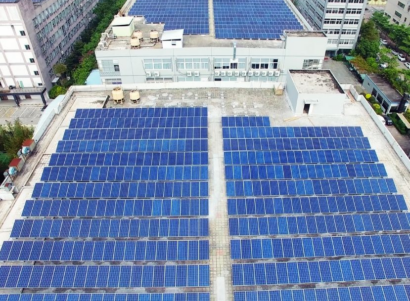Associate Researcher | Environmental Health Sciences, School of Public Health, UC Berkeley
Affiliate | Energy Technologies Area, Lawrence Berkeley National Lab
Three weeks ago, Governor Jerry Brown launched the Global Climate Action Summit in San Francisco by announcing a sweeping and unprecedented climate target for the state of California: full carbon neutrality by the year 2045. He simultaneously signed into law a senate bill requiring 100% of the state’s electricity to be produced by zero-carbon resources by 2045. The latter act stole the headlines but is in fact the far less ambitious of the two targets: 100% renewable electricity is just one of the many building blocks needed to achieve economy-wide net zero carbon emissions.
The implication of this directive is huge: by 2045 California must eliminate, sequester or offset any and all carbon emissions to achieve net zero emissions. The executive order is not yet binding and the legislature now needs to codify it into laws. However, how these laws will define “net” and what pathways the state takes to reach this target have profound implications for not only the climate, but also for environmental and human health co-benefits that could accrue for communities across California.
Net zero means that individual sources in the state can either eliminate emissions or continue to release greenhouse gases as long as those emissions are reduced elsewhere. Emission offsets can include techniques such as increasing carbon sequestration in soils, forests and farmland, purchasing clean electricity credits from neighboring states, or through emerging technological approaches such as the direct capture and removal of carbon from the atmosphere. California may also consider allowing emissions within the state to be offset by carbon reductions in far-away states or even other countries. However, any in-state source that uses offsets will not only continue to emit carbon, but also health-damaging co-pollutants that are often co-emitted with it. This pollution will continue to affect surrounding communities, which disproportionately impacts low-income populations and communities of color.
Achieving carbon neutrality is a vital yet formidable challenge. Carbon reductions will hinge on the implementation of widespread energy efficiency across every sector, decarbonization of the power sector (as required in SB 100) and the electrification of cars, trucks, home heating, and other sources to run on carbon-free electricity. Currently, only 16% of California’s emissions come from the power sector, 40% from transportation and the rest from industrial, residential, commercial, agriculture and other sectors. Some emission reductions, such as from cement production, will present more challenges than others and are more likely to require some kind of offset. Some may argue that California’s current cap-and-trade system should be expanded to allow for the trading of carbon credits to achieve these offsets, but doing so would not necessarily ensure the reduction of localized air pollutant emissions.
Brown’s net zero carbon executive order appropriately requires that any climate strategy seek to reduce emissions in low-income and disadvantaged communities. The degree to which this goal is achieved, however, will depend on careful policy design to ensure that the communities currently burdened with the highest impacts from fossil fuels see real environmental and health benefits.
Furthermore, any offsets or emissions trading will require clear requirements regarding the additionality and verifiability of greenhouse gas reductions. If we plant a tree, can we guarantee that it wouldn’t have been planted otherwise (is it “additional”)? If we export clean electricity to neighboring states, can we ensure that any fossil fuel it displaces wouldn’t have been replaced by clean electricity anyway? If we increase the amount of carbon in soils through land management techniques, can we verify that the carbon is taken up and remains in the soil? These requirements are complex, particularly if out-of-state offsets with limited direct oversight are allowed.
Brown’s target for carbon neutrality in 2045 and net negative emissions thereafter is groundbreaking from a policy standpoint, but is in perfect alignment with the scientific consensus that we will need to not only curtail greenhouse gas emissions, but actively remove carbon dioxide from the atmosphere later this century to mitigate climate change’s worst impacts. Doing so in a verifiable, additional and equitable way will inevitably complicate this challenge, but will also give the incoming governor and legislature a unique opportunity to lead the world with a replicable framework to achieve meaningful greenhouse gas and co-pollutant reductions with direct community benefits.
















